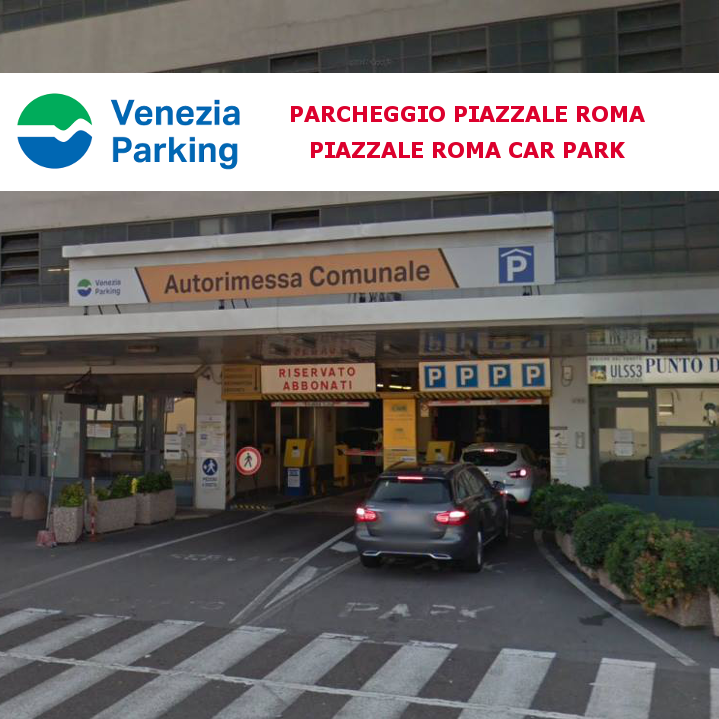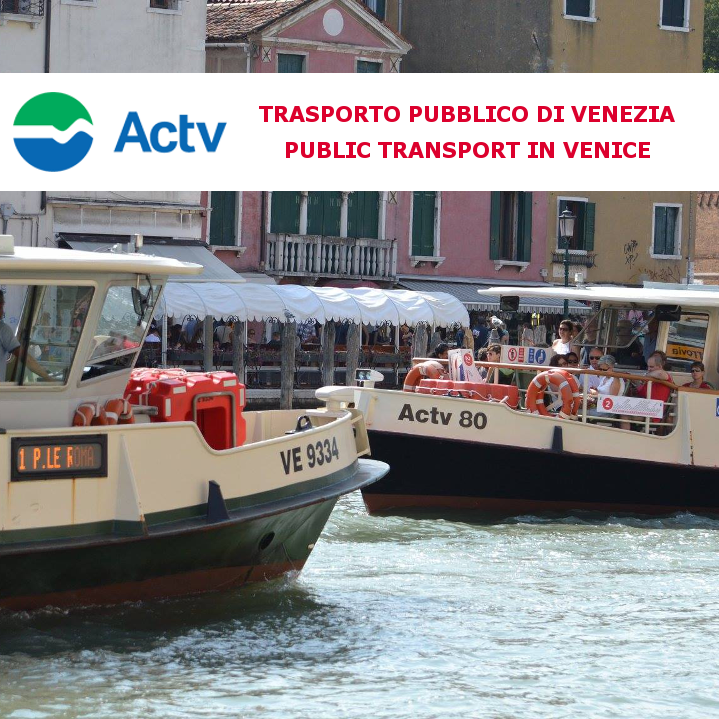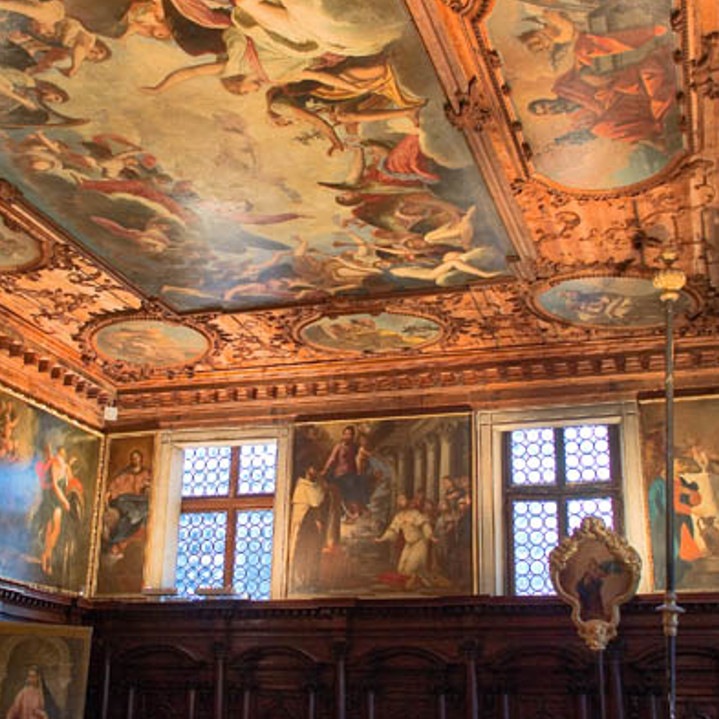You are here
Santa Croce district
Starting from Piazzale Roma with the new Ponte della Costituzione (Calatrava, 2008) over the Grand Canal on your right, cross one of the two bridges over the Rio Nuovo canal (opened in 1938). Cross the Giardini Papadopoli, the park created in 1834 to a design by Francesco Bagnara (modified in 1863) on an area once occupied by the La Croce monastery demolished in 1810. Originally much larger, it was made smaller when the Rio Nuovo canal was opened in 1932-33. Among the trees on the left there is a monument to Pietro Paleocapa (1788-1869), illustrious hydraulic engineer.
On the right looking out over the gardens is the façade of the late 16th century Palazzo Foresti–Papadopoli, famous for the nocturnal parties once held there and for the garden packed with exotic plants and flowers. Cross the gardens to Ponte dei Tolentini. On your right you can admire the 18th century Palazzo Condulmer (no. 251) with its semicircular pediment, once owned by the family of Pope Eugene IV elected in 1431. On the other side of the bridge stands the Church of San Nicolò da Tolentini (the Tolentini were the Theatines, the religious order founded in 1524 by Giovanni Pietro Caraffa – then Pope Paul IV – and Saint Cajetan di Thiene. After the Sack of Rome, they took refuge in Venice).
Opening out onto Campazzo dei Tolentini is the entrance to the former Monastery of the Tolentini, now occupied by the Venice University of Architecture (IUAV). The door is a remarkable work of contemporary architecture constructed in 1985 to a design by Carlo Scarpa (1906-1978).
Now proceed along Calle de Ca’ Amai, cross Ponte delle Sechere and continue down the alleyway with the same name and Calle delle Chiovere (the chiovere were the areas where the wool cloth was left to dry after dyeing) as far as Campo San Rocco. On the left you can see the Church and Scuoletta of San Rocco (the first building constructed here by the confraternity). On the right is the Scuola Grande di San Rocco begun in 1546 to an initial design by Bartolomeo Bon, later completed by Sante Lombardo and finally Scarpagnino.
From Campo San Rocco you can admire the imposing Basilica of Santa Maria Gloriosa dei Frari, whose main façade looks out over the Campo dei Frari on the side flanked by the canal with the same name. To reach this square, go down the side of the church itself.
Campo dei Frari: lining this vast square are a number of buildings formerly occupied by various religious confraternities known in Venice as "scuole", including (at no. 2998) the Scuola della Passione (1593), once the most important religious congregation after the six "Scuole Grandi". Alongside the façade of the Frari Church is the State Archive and Veneto Archive Superintendency housed in a former Franciscan monastery with a 19th century façade by Lorenzo Santi.
Cross Ponte dei Frari, go left then cross Ponte di San Stin, taking you to Campo San Stin (Saint Stephen Confessor) named after the church with the same name which stood there until 1810 when it was demolished by the Napoleonic administration. On the left of the square, go down Calle del Tabacco, then turn right down Calle del Magazen leading to the San Giovanni Evangelista complex (portal, scuola and church). This dates back to the 12th century when the Church of San Giovanni Evangelista was built on land owned by the Badoer family (owners of vast estates in the area).
The Campiello di San Giovanni Evangelista was restructured between 1478 and 1481 by Pietro Lombardo who created a remarkable and harmonious Renaissance setting, with graceful entablature on elegant Corinthian pilasters. The portal (until the 19th century closed with a gate) and two windows with tympanum open out of an attractive marble wall with a curved coping decorated with an Eagle (symbol of the Evangelist) and two angels in adoration of the Cross (a reference to the relic kept by the confraternity). The standard bearing column dates from 1553.
Leave the delightful group of Renaissance buildings and continue down Calle dell’Olio (or del Caffetier) with on the right the Corte del Calderer (blacksmith) and on the left the Corte Nova with their original cotto paving. The alleyway ends at Rio Marin along Fondamenta della Late.
Cross Ponte della Late, then Ponte del Cristo. When you reach Campiello del Cristo, turn right, then left to Campiello Stropa where a “sotoportego” (portico) leads to the Corte dell’Anatomia or Fiorenzuola. Turn right and cross Ponte dell’Anatomia. No. 1507 on your right was the old Teatro Anatomico (Anatomy Theatre), once seat of the College of Physicians. A law from 1368 dictates that the anatomy of corpses must be studied in Venice for a certain period of time every year. In about 1480, the physician Alessandro Benedetti proposed building an anatomy theatre, but the project was not concluded until two centuries later, thanks to the legacy of a nobleman from the Loredan family. The anatomy theatre was established in this building in 1671.
You are now in Campo San Giacomo dell’Orio. One of the few squares in the city with trees, it is divided into three parts by the particular position of the angled church whose façade is oriented towards the more secluded square-parvise bordering on the canal bearing its name. The bell tower is also an important architectural and landscape feature. Among the buildings lining the square, particularly noteworthy are Palazzo Pemma at numbers 1621-24 completed at the beginning of the 18th century and the 17th century Palazzo Mariani at numbers 1584-86.
There are three 16th century wellheads in the square, one in Verona marble and two in Istrian stone.
This area has always played an important role in the life of the district and represents a meeting place for the local inhabitants who celebrate their patron saint with a festival on 25 July.
Doubts exist as to the origin of the word "Orio". For some it is thought to derive from rio (canal), others believe it refers to the presence of a laurel tree (alloro), or the Orio family who lived there.
Continue down Calle Larga as far as Ponte del Megio.
Detour
You can now make a diversion to Campo San Zan Degolà with the church of the same name: Calle del Spezier, Calle del Capitelo, Campo San Zan Degolà – Church Returning to Ponte del Megio, continue down Ramo del Megio then turn left and immediately right. Proceed down Ramo and Calle del Tentor as far as Salizzada San Stae. Turning left, Palazzo Mocenigo is on your right.
Continue towards the Grand Canal until you come to Campo San Stae bordering on the Grand Canal and dominated by the church with the same name.
Alongside the church on the left stands the Scoletta dei Tiraoro e Battiloro, an elegant building dating from 1709, formerly the seat of the confraternity. It is today used as a venue for temporary exhibitions.
Cross the small Ponte de Ca’ Giovanelli and go down Calle de Ca’ Pesaro. Opposite you is the monumental entrance to the Ca’ Pesaro Museum.
Opposite Fondamenta de Ca’ Pesaro, stands Palazzo Agnusdei, with its characteristic reliefs representing an Annunciation, a Mystic Lamb and the symbols of the four evangelists (Zodia). Follow Calle del Tiozzi, Bonte del Ravano and Calle del Ravano. If you turn left at the end of the alley and continue along Calle di Ca’ Corner, you come to Palazzo Ca’ Corner della Regina.
If on the other hand, you turn right, the itinerary continues along Calle della Regina as far as Sottoportego Gian Andrea della Croce. After the bridge with the same name, you come to Campo San Cassiano.
Turn left around the edge of the church and go down the full length of Calle del Campanile as far as Fondamenta dell’Olio bordering on the Grand Canal from where you can enjoy a magnificent view of the famous Palazzo Ca’ D’Oro (see the Cannaregio itinerary).
After crossing the bridge at the end of Fondamenta dell’Olio, you come to Rialto Market, a vast area between Campo delle Beccarie (butcher's shops), Campo de la Pescaria, the Casaria (cheeses), Campo della Corderia, Campo Cesare Battisti (formerly Bella Vienna), the Erbaria (vegetables) and the Naranzeria (oranges). From here, you come to Campo San Giacomo di Rialto with the church of the same name.





